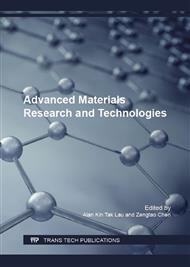p.104
p.109
p.114
p.122
p.127
p.132
p.137
p.142
p.149
Cut Surface Features in Various Die-Cutting Processes
Abstract:
Currently, the shaped parts combined with straight, concave, and convex portions are increasingly fabricated. To produce the straight portion, the shearing theory is usually applied. As well as, to produce the concave and convex portions, the punching and blanking theories are usually applied. However, with the same die-cutting process parameters, the comparison of cut surface features of straight, concave, and convex portions has not been investigated yet. Therefore, in the present research, the comparison of the cut surface features in various die-cutting processes, including shearing, blanking, and punching processes are investigated. The finite element method (FEM) was used as a tool to investigate these cut surface features. The cut surface features were investigated and clearly identified via the changes of the stress distribution analyses. The results elucidated that with the same die-cutting process parameters, the different cut surface features were obtained. Specifically, the crack formations were easily generated in the case of blanking process, following by the shearing and punching processes, respectively. Therefore, the smooth cut surface was smallest in the case of blanking process, following by the shearing and punching processes, respectively. The laboratory experiments were carried out to verify the accuracy of the FEM simulation results. Based on the cut surface features, the FEM simulation results showed good agreement with the experimental results in terms of the cut surface features. Therefore, to design the die-cutting process parameters to meet the product requirements of complicated shapes, the understanding on these working process parameters being upon the shaped parts is necessarily.
Info:
Periodical:
Pages:
127-131
Citation:
Online since:
November 2016
Authors:
Keywords:
Price:
Сopyright:
© 2017 Trans Tech Publications Ltd. All Rights Reserved
Share:
Citation:


